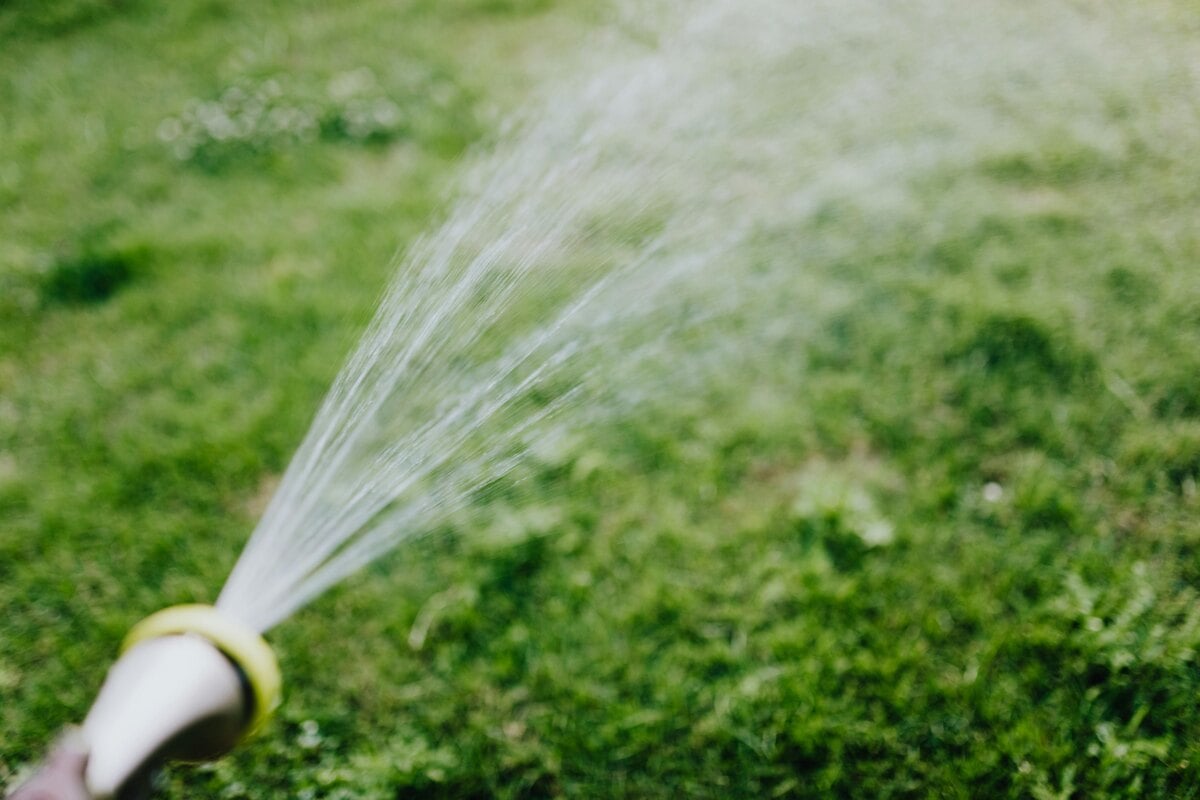
A weed and feed treatment can eliminate weeds and feed the turf with healthy nutrients in a single time-saving application. But it’s the after-treatment irrigation that seals the benefits.
The rule of thumb is to give the product 24 to 72 hours before watering, depending on the product. Post-emergent formulas demand extra leaf contact time to annihilate the weeds, while weed preventers act only after being watered into the soil and need you to move faster.
This article covers all the scenarios you might encounter and guides you through the when and how much to water after applying a weed and feed for optimal results.
Quick Watering Guide
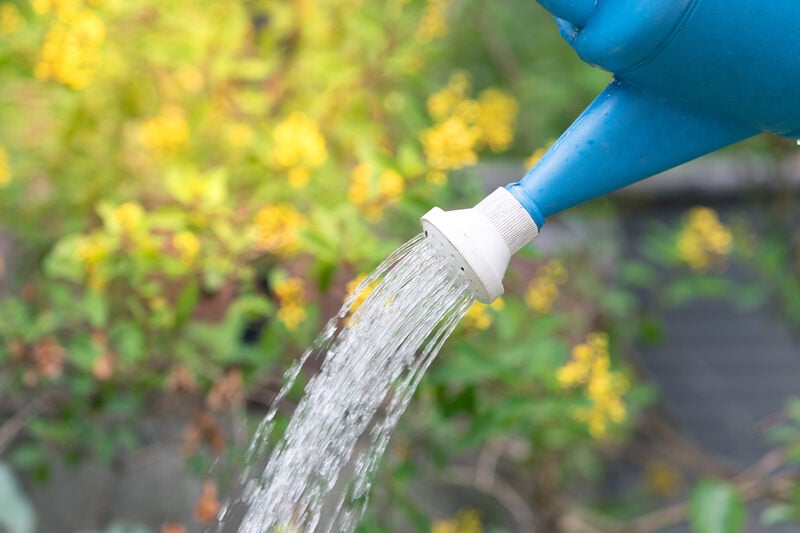
Note: These are general guidelines. Check the product label for specific watering recommendations.
| Type of Weed and Feed | When to Water After the Application |
| Granular Post-Emergent (or pre- and post-emergent mix) | Wait 24 to 72 hours before watering to allow granules to dissolve on weed leaves. *Water is needed for the product to completely dissolve and penetrate the soil. |
| Granular Pre-Emergent | Water within 3 days with 1/2 inch or more to get the herbicide into the soil. *Watering is required to dissolve and activate the product. |
| Liquid Weed and Feed | Wait 24 to 48 hours before irrigating the lawn to avoid dilution (check the label). *Watering is not necessary to ensure absorption. |
Fitting a weed and feed application into your lawn care schedule can be tricky. Hire a lawn treatment pro if you don’t want to deal with all the application and watering details.
Types of Weed and Feed Products
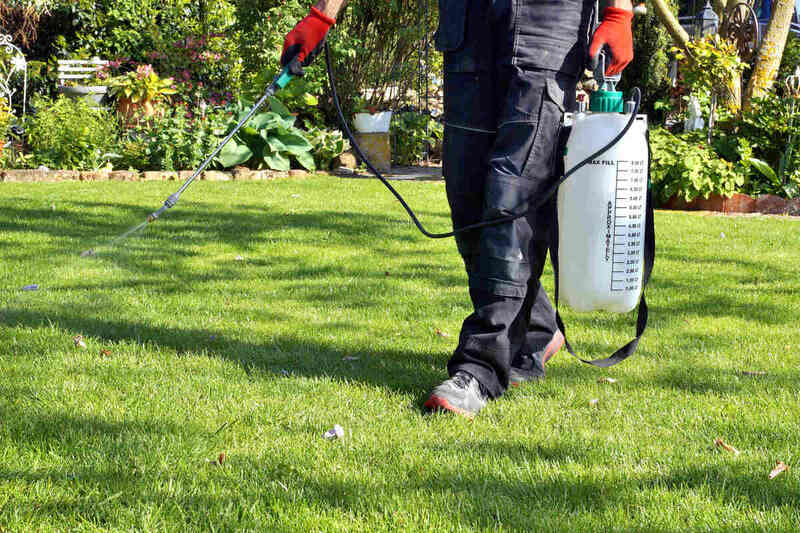
A weed and feed product saves time by combining fertilizer and herbicides in the same product. It controls weeds and feeds the lawn in a single application, but requires special care to provide optimal results.
Here’s how the type of product determines when to water after a weed and feed application:
- Granular weed and feed products must dissolve in water to activate their ingredients. They work slowly and need more time to penetrate the soil and show results. On the upside, granular products have a lower risk of fertilizer burn.
- Liquid weed and feed delivers the herbicide and fertilizer in a liquid solution that easily absorbs into the soil and plants. Watering can reduce efficacy, so you must wait for at least 24 hours before irrigating the lawn.
Liquid mixes are often undiluted products. Follow the label dilution rates carefully — overly concentrated solutions can burn the grass. - Pre-emergent weed and feed only works if absorbed into the soil before the weeds have sprouted. The pre-emergent herbicide forms a chemical layer in the topsoil that prevents the weed seeds from forming healthy seedlings.
- Post-emergent weed and feed products kill already-grown broadleaf weeds (e.g., dandelions, chickweed, clover, plantain). They contain selective weed killers that penetrate the plants through the leaves and/or plant roots once watered into the soil.
Note: Most weed and feed products are applied too late in the spring to keep crabgrass from sprouting. If you want to eliminate crabgrass, it’s better to apply a crabgrass preventer early in the season.
Apply weed and feed products in spring and fall when temperatures are between 60 F and 90 F. Prepare the lawn for weed and feed by mowing and lightly watering 1 to 2 days before the application to improve absorption and prevent chemical burn.
See Related: Liquid vs. Granular Fertilizer
When to Water After Granular Weed and Feed
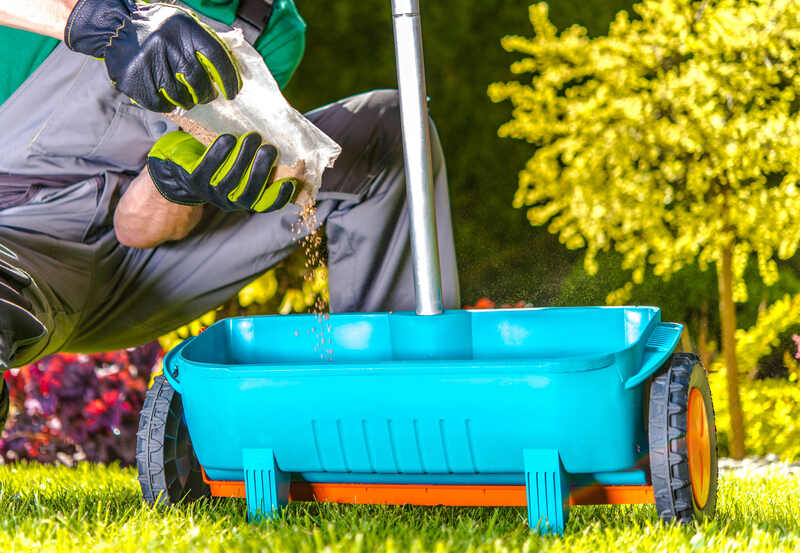
If you treat the lawn with a granular weed and feed, wait 24 to 72 hours before watering. Check the label for the specific waiting time for your product.
Post-Emergent Weed and Feed
The rule of thumb: Apply on a slightly wet lawn and wait at least 24 hours before the next irrigation session. Check the manufacturer’s label to see if this works for your product.
Extension turfgrass specialist David M. Kopec from the University of Arizona says the trick for a correct weed and feed application is to water BEFORE the application and spread the weed and feed while the weeds are still wet. This ensures the granules dissolve on the weed leaves.
“If we do this in the reverse order (apply the post-emergence granule product first, and then water it in), the granule will dissolve and wash off down to the soil surface. This can greatly reduce the weed control response.”
Do not water the lawn after treatment so the weed killer can penetrate the leaves. Check the package label for a precise waiting time. Some manufacturers recommend waiting 24 to 48 hours before watering, others 48 to 72 hours.
- If you irrigate too soon, the water may displace undissolved granules, creating overfertilized areas and patches with untreated weeds.
- If you wait too long to water and the soil becomes dry, salts in the product might concentrate in the soil, causing fertilizer burn.
When watering after a weed and feed application, use the sprinkler system to evenly shower the lawn. A strong jet from a garden hose can wash off the chemicals.
Apply 1/2 to 1 inch of water, depending on the weather:
- During a hot, dry spell, apply more water to moisten the soil so the chemicals don’t burn the grass.
- If it’s London-style weather — damp and cloudy — apply less. If you overwater after a weed and feed treatment, you can dilute the chemicals and cause runoff and leaching.
See Related:
- 8 Best Post-Emergent Herbicides [Reviews]
- Applying Post-Emergent Herbicides to Your Lawn
- How Much Does a Sprinkler System Cost?
Pre-Emergent Weed and Feed
The rule of thumb: Apply on dry turf and water the lawn afterward to activate the chemicals. Check the manufacturer’s label to see if it works for your product.
According to Kansas State University experts, you should “water in all pre-emergence products with a half-inch or more of water within 3 days after application.”
Pre-emergent herbicides must become active in the soil before weeds germinate.
- If you see weeds sprouting on the lawn, you’re out of time: water the same day you apply the weed and feed. You’ll probably need to apply a post-emergent later.
- If it‘s still early, you can water on your regular irrigation day or wait for the next rain shower.
What happens if you apply too much water? If you soak the soil, the weed killer and fertilizer are diluted and less effective. You also risk leaching them into the waterways.
See Related:
When to Water After Liquid Weed and Feed
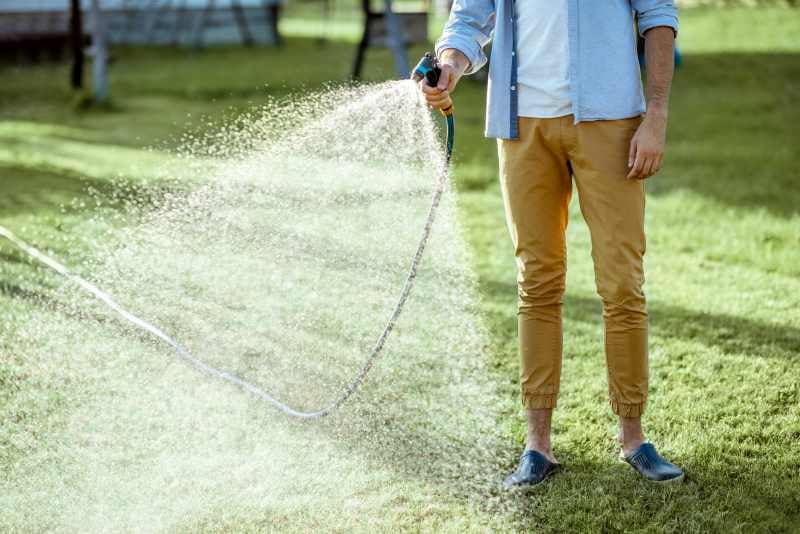
The rule of thumb: Watering is not necessary to activate the chemicals. Wait 24 to 48 hours before the next irrigation session to avoid diluting the product.
You must allow the liquid herbicide to penetrate the leaves and soil before watering the turf. For most weed and feed products, this means waiting 24 to 48 hours before applying water to the lawn. If you water the lawn too soon, you dilute the product and might not get good results.
Once the waiting time is over, you can resume your regular watering schedule, applying 1 inch of water per week and adjusting to fit the weather conditions.
See Related: How Often Should I Water My Lawn?
Why Watering is Important
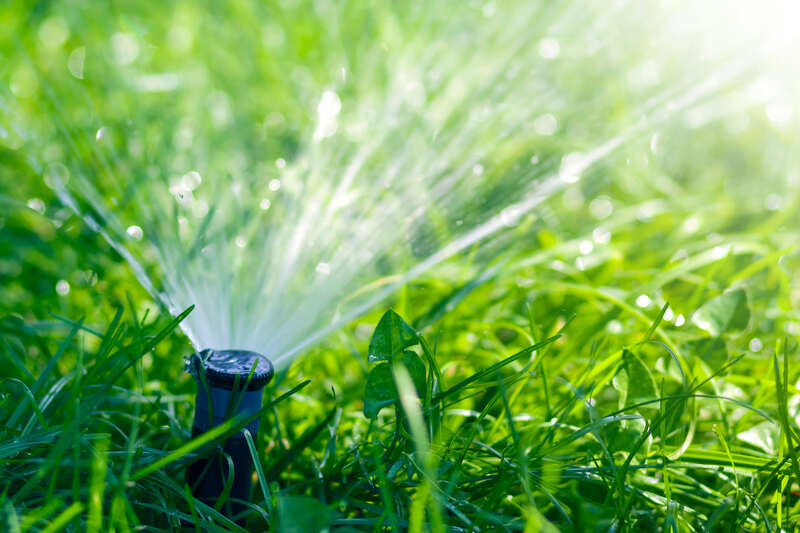
- Activates herbicides: Chemicals in granular form, either fertilizer or herbicide, are inactive unless dissolved in water.
- Distributes fertilizer: Water breaks the weed and feed granules into microscopic particles and spreads them evenly across the lawn and into the soil.
- Helps prevent the product from burning grass: Weed and feed products are rich in salts that can burn the grass if concentrated in a single spot. Water helps dilute and spread the chemicals, keeping your turf safe.
See Related: 8 Signs Your Lawn Needs Watering
What if it Rains After I Apply Weed and Feed?
When to water the lawn after applying weed and feed might not matter if Mother Nature plays a prank and starts raining.
Light rain might be beneficial, helping the fertilizer and weed killer dissolve, but if it’s raining cats and dogs, it might wash out the chemicals before they can act. Watch your lawn for 10 to 14 days for signs of weed kill and turf green up.
Most often, the fertilizer still does its job, but the herbicide is less effective, and you might need to apply a weed killer again. If so, target the remaining weeds with a spot treatment instead of a whole-lawn application, so you avoid loading the soil with unnecessary chemicals.
Leave the Weed and Feed to Trusted Professionals
Weed and feed might save time, but it might also give you a headache with all the application details. It is easier to hire a lawn care professional. LawnStarter pros are only a click away and can keep your lawn top-notch year-round. Rely on them for all the necessary lawn treatments, from flawless lawn mowing to dethatching and overseeding.
Sources:
- “Crabgrass Control Success.” Kansas State University.
- “Granular Weed Control Products in Lawns.” By David M. Kopec, extension turfgrass specialist. University of Arizona.
- “Weed Control in Home Lawns.” By Matthew J. Fagerness, turfgrass specialist. Kansas State University.
Main Image Credit: Pexels